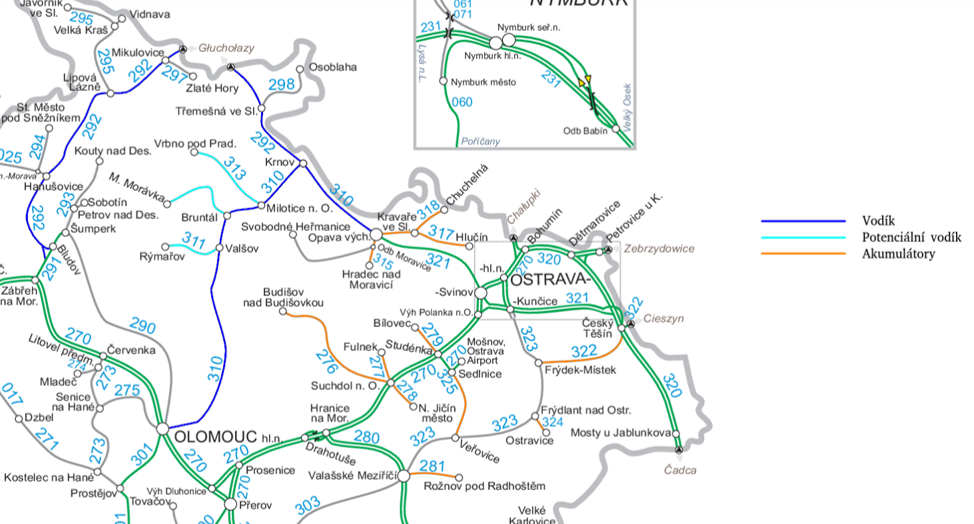As part of the VSB-TUO, CEET, Centre ENET, we participated in the project entitled Reducing energy consumption and negative environmental impacts of railway transport through the preparation of infrastructure for trains with alternative propulsion. The aim of the project was, among other things, to identify and analyse suitable rail routes that could be electrified or adapted for the operation of trains using alternative fuels such as batteries or hydrogen in the future. The work of the researchers involved was to carry out a detailed analysis of the technical and environmental aspects of the individual lines, the availability of infrastructure and the possibility of recharging or refuelling the propulsion systems.
The study included the identification of specific routes in the Moravian-Silesian region that are not currently electrified and where alternative drives could offer a practical solution. On behalf of the Centre ENET research we recommended routes such as: Sedlnice-Veřovice, Studénka-Bílovec, Frýdlant nad Ostravicí-Ostravice or Valašské Meziříčí-Rožnov pod Radhoštěm. For these routes, we took into account not only the length and range of the battery trains, but also the availability of places for installing charging stations. Our analysis also reflected the need for a lower carbon footprint and wider environmental impacts, from energy production to the operation of the trains themselves.

A key output was the identification of the range limits of battery trains, which can ideally reach 60-80 km. With regard to safety and battery reserve capacity, we recommended a realistic range of around 40 km. This data was essential for designing the infrastructure and operating schedules.
We believe that the results of our study and the developed Methodology for passporting railway lines intended for trains with alternative drives became one of the key bases for the introduction of battery trains on selected lines in the Moravian-Silesian region. Thanks to the tireless work of everyone involved, the first battery trains were put into operation, which is a significant milestone not only for the region but also for the whole Czech Republic in the field of sustainable transport. As the article on Novinky.cz also illustrates more about this technological innovation.

„We are proud to have contributed to the implementation of this ecological and efficient mode of transport, which opens up new opportunities for the modernisation of the Czech railway network“, said the director of the ENET Centre Lukáš Prokop.